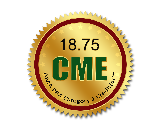
Biography
Biography: Shaoying Li
Abstract
Double-hit lymphoma (DHL) has been defined by 2008 WHO as a B-cell lymphoma with MYC/8q24 rearrangement in combination with a translocation involving another gene such as BCL2 or BCL6. The most common form of DHL has translocations involving MYC and BCL2, also known as MYC/BCL2 DHL. In the past few years, numerous case series of MYC/BCL2 DHL have been reported in the literature. Most cases of MYC/BCL2 DHL morphologically resemble diffuse large B-cell lymphoma (DLBCL) or B-cell lymphoma, unclassifiable with features intermediate between DLBCL and Burkitt lymphoma. These tumors have a germinal center B-cell immunophenotype but an aggressive clinical course characterized by a high proliferation rate, advanced-stage disease, extranodal involvement, high International Prognostic Index score and high serum lactate dehydrogenase levels. All tumors have a complex karyotype. Despite a variety of therapeutic approaches that have been used to date, patients with DHL have a poor prognosis. Here we will discuss the clinicopathologic, immunophenotypic, cytogenetic and prognostic features of MYC/BCL2 DHL and some remaining issues.

